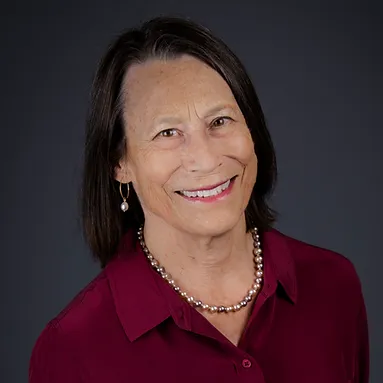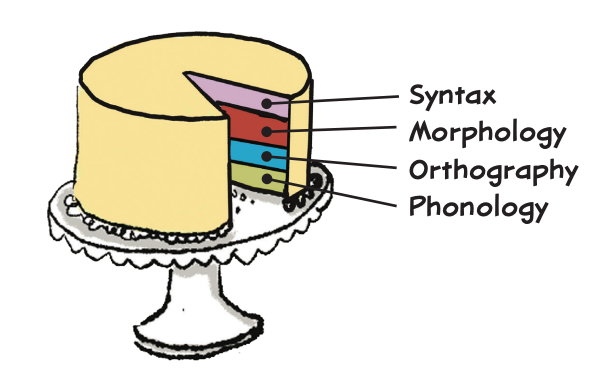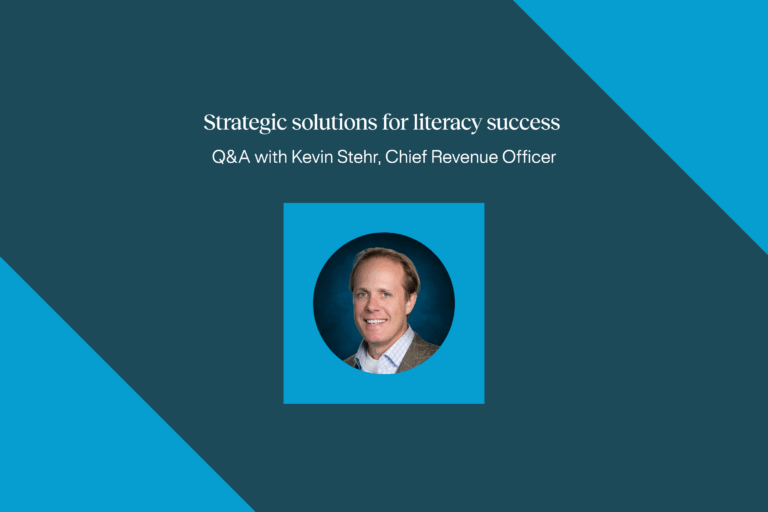5 things Louisa Moats and Bruce Rosow want you to know about learning to spell


Spellography is not a traditional spelling program. There are no lists to memorize and no Friday tests whose words are soon forgotten. Instead, this program explores why words are spelled the way they are, emphasizing understanding over rote memorization.
Louisa Moats, EdD
In a series of four webinars, Dr. Louisa Moats and Dr. Bruce Rosow offer insights, practices, and activities to help intermediate students make sense of the English spelling system and power deeper learning and recall. Focusing on the relationship between language and systems of language and spelling, they dispel myths and misunderstandings about spelling based on years of interdisciplinary research on learning to read and spell.
Here are just a few of the many research-based insights you’ll discover in the webinar series:
1. Spelling instruction—it’s very, very important
Dr. Louisa Moats spells out one of the biggest problems with language arts instruction: “We often think of spelling instruction as the poor relation in language arts. We don’t pay enough attention to it, and it’s very, very important.”
Why it matters
The research (Graham & Santangelo, 2014) shows that explicit and systematic instruction leads to improvement in spelling, spelling during writing, reading, and phonological awareness.
2. Spelling and reading are reciprocal—one influences the other.
Spelling and reading development are closely correlated overall, and both depend on specific language processes.
Why it matters
Spelling requires formation of a completely specified mental image of a word. Knowing a word’s spelling increases the fluency and accuracy of word recognition in reading. Integrating spelling (encoding) into a basic reading lesson improves results in both skills (Graham & Santangelo, 2014; Weiser & Mathes, 2011).
3. Poor/weak spellers typically have unresolved weaknesses in phoneme awareness.
Spelling is not just about memorization. A high level of phoneme awareness is required for good spelling, even more so than for good reading. It’s something to be alert to when students have trouble spelling.
Why it matters
Spelling error research tells us that when poor spellers are making errors, they’re challenged by very specific aspects of word structure. They have trouble processing all the sounds in consonant blends or clusters, and they typically leave out the internal sounds in consonant blends and clusters. They have challenges identifying sounds that are embedded in words—particularly liquids and nasals.
4. To remember words, we do not use “visual” cues, such as word shapes or rote memory for letter strings.
On their own, these visual cues are not distinctive. We develop a mental mapping system—even for irregular words—in which sounds (phonemes and syllables) are bonded to print (graphemes and letter sequences) and then to meaning (Ehri, 2014).
Why it matters
Phonological awareness (especially phoneme awareness), morphological knowledge, knowledge of print patterns or allowable letter sequences, knowledge of phoneme-grapheme correspondences, and vocabulary knowledge all contribute to the brain’s ability to store mental images of written words (Bourassa & Treiman, 2014; Treiman, 2017; Werfel, Schuele, & Reed, 2019).
5. Explicit teaching of language structure by an informed teacher works best. Keyword: informed teacher
Teachers’ linguistic knowledge, including their understanding of spelling conventions, word parts, and phonemes, is strongly associated with student gains in spelling.
Why it matters
According to research by Puliatte & Ehri (20170, the teacher’s knowledge of the language structures that are being taught determines the effectiveness of a structured language approach (Puliatte & Ehri, 2017).
In the first webinar of the series, Dr. Moats explains the objectives of Spellography:
“From the very beginning in our approach in Spellography, we emphasize the idea that language is a layer cake. It’s made up of language systems that have distinguishing features and properties, but that interact with one another.
“We want to guide students into discovering how language works at all of these levels—the level of the sound structure of the language, the phoneme-grapheme correspondences, the patterns in the English spelling system, the meaningful parts of words in the history and origin of words or etymology, which has a lot to do with the way we spell in English, and then, the role of grammar and usage in our spelling system.
“It’s not a traditional spelling program…our approach is much more focused on understanding why words are the way they are. The learning principle that underlies that approach is that we will remember best what we understand and have thought about. So we want to take rote practice out of spelling instruction and focus on whatever meaningful ideas we can surround the given word with, as we’re learning how to spell it, read it, and use it.”

Watch the webinars & more
Watch the on-demand webinars, download the webinar handouts, and explore free sample Spellography lessons and other resources. All are here on a special Spellography resource page.
About the presenters
Louisa Moats, EdD, is a leading voice in literacy, and a life-long champion of teachers. She has been a teacher, psychologist, researcher, graduate school faculty member, and author of many influential scientific journal articles, books, and policy papers on the topics of reading, spelling, language, and teacher preparation. Dr. Moats co-authored LETRS®, Spellography and the book Speech to Print: Language Essentials for Teachers. She served as a board member and officer of the International Dyslexia Association for many years and led the committee that developed IDA’s Knowledge and Practice Standards for Teachers of Reading.
Bruce Rosow, EdD, began his career as an intermediate grade classroom teacher at Guilford Elementary School (Vermont), before moving into a remedial instruction role teaching word study. Dr. Rosow co-authored the word study curriculum Spellography, with Louisa Moats EdD, which includes lessons for diverse students based on the principles of structured language instruction for intermediate and middle school students. After serving as the Academic Dean at the Greenwood School, he returned to public education in the Windham Central Supervisory Union (Vermont) where he ran The Language Lab to provide remedial instruction to struggling middle and high school readers.
Join Dr. Moats and Dr. Rosow for this engaging four-part series and deepen your understanding of the critical aspects of spelling to help all your students become better spellers.



